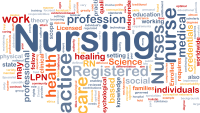Abstract
In baccalaureate nursing education, comprehensive health assessments are fundamental in the care of patients, families, and communities. Comprehensive health assessments lead to further examination of the social determinants of health for the client as related to the overall outcomes of a client’s health. Social determinants of health are directly related to adverse childhood experiences. Adverse childhood experiences spotlight specific events that are related to social determinants of health. Being able to recognize a client’s physical and mental health status as they relate to adverse childhood experiences will help produce better overall health assessment outcomes for individuals and populations. It is recommended to incorporate adverse childhood experiences or ACE training into baccalaureate nursing education.
Incorporating ACE Training in Baccalaureate Nursing Curriculum
In baccalaureate nursing education programs, students are educated on how to be providers of direct and indirect care as generalists (AACN, 2008). They must learn to care for individuals, families, and community groups. The hallmark of the nursing profession is advocacy (AACN, 2008). The role of the nurse has evolved with advocacy remaining at the center of caring for others. Nurses are pre-pared to deliver high-quality care and evaluate outcomes of the care provided through baccalaureate nursing education. At the base of baccalaureate nursing education are the fundamentals of nursing. Nurses learn to apply the nursing process through the fundamentals of nursing curriculum. The nursing process is an organized method used to plan and provide specialized care to clients in the health care setting (Papathanasiou et al., 2014). Assessment (A), Diagnosis (D), Planning (P), Implementation (I) and Evaluation (E) make up the valuable steps of the nursing process (Wilkinson, 2012). Assessment of the client affects treatment effectiveness and overall outcomes. Individualized client plans of care are based on a thorough assessment of the client by the nurse. Nurses conduct physical assessments of their clients as well as comprehensive health assessments (CHA). CHAs survey both the socio-economic and behavioral effects of the client (Phillips et al., 2017). CHAs lead to further examination of the social determinants of health (SDOH) for the client. SDOH are directly related to the overall outcomes of a client’s health. Adverse Childhood Experiences (ACEs) are also directly related to the overall health outcomes of a client (Cronholm et al., 2015). Incorporating ACE training into baccalaureate nursing education will enrich students’ CHA skills, leading to better outcomes for the clients they serve.
Adverse Childhood Experiences
ACEs are described as adverse experiences that occurred before the age of 18 and have shown to be related to chronic physical and mental health conditions and early death in adults across the lifespan (Ace Interface, 2015). The ACE survey, intended for adult use only, is a ten-question survey classified into three categories of abuse, neglect, and household dysfunction. Studies have shown that ACEs are common with 62% of the population identifying at least one ACE in South Carolina, 22% of South Carolinians reporting two or more ACEs, and 16% of South Carolinians reporting four or more ACEs (South Carolina adverse childhood experiences (ACEs) data, 2021). ACE scores of four or more can be associated with adverse health risks and chronic conditions across the lifespan. South Carolina ranks 41st in child well-being, falling from a previous rank of 39th, according to the Annie E. Casey Foundation (2021).
While ACEs are common and can be prevented, current nursing textbooks do not provide sufficient information or emphasis on the effects of ACEs, Positive Childhood Experiences (PCEs), or trauma-informed care (TIC) across the life span (Muire, et al., 2019). Novice nurses with high ACE scores can be empowered to lessen their negative outcomes by incorporating resiliency tools not previously practiced before ACE training (Clark and Aboueissa, 2021). Introducing ACE training to students in community and mental health nursing courses enhances student understanding of these valuable aspects of the individual-, family-, and community-centered care. ACE training provides students with a clearer lens from which to assess and evaluate all levels of care, leading to improved client outcomes through proper assessments, planning, and interventions. It also provides students with insights into their own ACE and resiliency scores. This information facilitates students’ self-evaluation as it pertains to patient care. Contrasts between Maslow’s hierarchy (Kendrick et al., 2011), the ACE disruption pyramid (CDC, 2022), and the RYSE Center’s Extended Aces Pyramid (2015) are discussed to include where the disruptions occur and how it affects individuals, families, and communities based on the age, gender, and type of event over the lifespan.
Incorporating ACE training and child well-being statistics into both the mental and community health nursing courses, in a South Carolina private Christian university school of nursing, has shown positive results in student-client interactions. The students are predominantly white and from middle- to upper-class families. After receiving a portion of the ACE training, the students take the ACE survey. Based on an average of six semesters, results from the ACE survey have shown that approximately 50 percent of our students report zero ACEs. In one semester, 69 percent of students reported having zero ACEs, demonstrating the need for providing ACE training. Students who have completed ACE training are more responsive to recognizing individuals who have experienced trauma, further solidifying the value in providing this training.
Mental Health Nursing
Two Master-Trainers of the ACE Interface program by South Carolina Children’s Trust provide the ACE training as part of a comprehensive clinical orientation at the beginning of their senior semester sequence of the nursing curriculum. ACE training is provided to help students gain insight into recognizing individual client behaviors that may be attributed to an ACE, resulting in the need for TIC. Incorporating ACE training also facilitates students’ awareness of their own ACE scores, building self-awareness and reducing potential countertransference. Students begin to understand important themes in mental health nursing: transference and countertransference, maintenance of healthy nurse-client boundaries, and the constant need for nurses to care for themselves while caring for others. During instruction, students are encouraged to treat all clients as potentially needing TIC as part of a patient-centered care approach to nursing. Providing TIC uses the nursing process to recognize and respond to past trauma impact on current relationships and behavior, from nursing assessment to each intervention provided by the nurse (Morgan and Townsend, 2020). Students who have an ACE score of zero are enlightened by the ACE training and have the knowledge to build upon during face-to-face client interactions.
Students are educated in the neurobiology of the brain and the effect of ACEs in early childhood, identifying times when the brain is most vulnerable to alterations in brain biology. Students compare normal brain biology and maturational expectations versus altered brain biology when influenced by toxic stressful events. Maslow’s hierarchy and the ACE Disruption pyramid are introduced, including a discussion of epigenetics, intergenerational trauma, historical trauma, and trauma resulting from natural disasters or climatic events.
As students enter the clinical setting, they are encouraged to reference their ACE training during client interactions and research client records for a better understanding of the client’s diagnosis or potential influence by ACEs. Clinical post-conference includes a discussion of client interactions, client behaviors, client calculated ACEs based on medical and family history, and observations during client care throughout the clinical day. Students are encouraged to be the adults who positively influence their clients during the day, possibly lessening the power of toxic stress, and thereby building resilience within their clients. ACE training is also referred to during the didactic portion of the mental health nursing course when it is relevant in regards to patient-centered nursing care for the various psychiatric disorders and special populations addressed within the course.
Community Health Nursing
Community Health Nursing expands nursing students’ understanding of individual client healthcare needs, providing culturally competent nursing care for total populations. Students learn population-focused care based on recognizing the SDOH as identified by Healthy People 2030 (Office of Disease Prevention and Health Promotion (ODPHP), n.d.). SDOH affect an individual’s overall health and quality of life. SDOH are encountered through where they are born, live, learn, work, play, worship, and grow (ODPHP, n.d.). The five realms of SDOH include Quality Healthcare Access, Quality Education Access, Social and Community Context, Economic Stability, and Neighborhood and Built Environments (Center for Disease Control and Prevention (CDC), 2022). SDOH are woven throughout the course and discussed thoroughly incorporating their connection to ACEs.
Multiple community health nursing assignments incorporate SDOH and ACEs. Students are required to complete family, home, and community assessments utilizing education and training received on SDOH and ACEs. Use of the Empower Action Model and protective factors developed by Srivastav, et al. (2019) are utilized to assist students in developing a nursing care plan and identifying protective factors present or needed for positive outcomes.
Various professional nursing roles are explored with examples of how to use SDOH and ACEs to provide excellent individual client- and community-centered care. Using South Carolina Child Well-Being data (AECF, 2021) of top-performing and bottom-performing counties, students investigate to identify vulnerable populations. Corresponding community resources are identified to improve overall health outcomes and support health promotion and disease prevention. Student nurses act as advocates to identify services needed to fill the gaps as determined by community assessments. The use of contrasting counties demonstrates the stark differences between counties, revealing situations students have never learned about or observed in this state. Students are asked to hypothesize how these differences have occurred and how nurses might advocate for improvement where identified.
The expanded realms of ACEs (individual, community, and environment) are discussed using video media of indigenous populations within the United States and Canada to address generational and historical trauma. Recent news video is used to demonstrate community disasters. Students are asked to identify the nurse’s role in these realms, prioritize client needs, and participate in a related simulation activity. Using their knowledge of community resources, students work in groups as the emergency management team to plan the safe evacuation of vulnerable community populations. This is followed by an emergency triage simulation.
Upon completion of all coursework, students submit a cumulative reflective final paper. After viewing the movie, Hillbilly Elegy (Howard, 2020), where the main characters encounter multiple SDOHs and ACEs, students are asked to identify a character and assess SDOH and ACEs. Students discuss observations using a trauma-informed lens to aid them in connecting their chosen character to services and assistance that will interrupt the cycle of ACEs, leading to better health outcomes. Student reflections involve how this course and assignment influenced their thoughts, feelings, and attitudes toward client care. Students describe how they would advocate for their character on local, state, and national levels to improve health policy surrounding SDOHs and ACEs.
Recommendations
After including ACE training in six consecutive semesters, student learning outcomes are positive. Course instructors will continue to incorporate ACE training in the mental and community health courses of the nursing curriculum. Students recently demonstrated greater achievements in Assessment Technologies Institute (ATI) readiness, an indicator of NCLEX preparedness, following ACEs training. Additional studies are needed to determine whether this is incidental or directly connected to the ACE training. Evidence demonstrates students have a well-developed understanding of ACEs, how they affect the physical, mental and emotional health of individuals and communities, and the importance of connecting clients to services and support.
Conclusion
ACE training positively enhances baccalaureate nursing students’ educational experiences in several ways: development of empathy for clients very different from themselves and their life experiences; demonstration of an increased ability to analyze cues and observations of the client’s environment and how the environment may affect the client’s decisions regarding healthcare; demonstration of higher-order thinking skills and critical judgment to better assess their clients’ needs and create more effective interventions and outcomes. As students move into their roles as novice nurses with increased resiliency skills, they may be able to withstand the high levels of stress. In conclusion, we believe by incorporating ACE training at the beginning of each semester into both the mental and community health nursing courses, our students have developed a greater sense of empathy and self-awareness which ultimately impacts the clients they serve.
References
ACE Interface. (2015). Understanding adverse childhood experiences. Peachtree City, GA: ACE Interface, LLC.
Annie E. Casey Foundation (AECF). (2021). 2020 Kids count profile South Carolina. https://www.aecf.org/resources/2020-kids-count-data-book#2020%20State%20Data%20Profiles%20on%20Kids%20Well-Being
American Association of Colleges of Nurses (AACN) (2008). The Essentials of Baccalaureate Education for Professional Nursing Practice. 1-62. http://www.aacn.nche.edu/education-resources/BaccEssentials08.pdf
Centers for Disease Control and Prevention (CDC). (2022). Social determinants of health: Know what affects health. https://www.cdc.gov/socialdeterminants/about.html
Centers for Disease Control and Prevention (CDC). (2022). Ace pyramid. https://cdc.gov/violenceprevention/acestudy/pyramid.html
Clark, C. S. and Aboueissa, A. E. (2021). Nursing students’ adverse childhood experience scores: A national survey. International Journal of Nursing Education Scholarship, 18(1): 20210013. https://doi.org/10.1515/ijnes-2021-0013
Cronholm, P., Forke, C., Wade, R., Bair-Merritt, M., Davis, M., Harkins-Schwarz, M., Pachtel, L., & Fein, J. (2015). Adverse childhood experiences: Expanding the concept of adversity. American Journal of Preventive Medicine, 49(3), 354-361.
Howard, R. (Director). (2020).Hillbilly Elegy. Imagine Entertainment.
Kendrick, D., Griskevicius, V., Neuberg, S., Schaller, M. (2011). Renovating the pyramid of needs: Contemporary extensions build upon ancient foundations. Perspectives on Psychological Sciences: a journal of the Association for Psychological Science. doi: 10.1177/1745691610369469
Office of Disease Prevention and Health Promotion (ODPHP). (n.d.). Social Determinants of Health. Healthy People 2030. U.S. Department of Health and Human Services. https://health.gov/healthypeople/objectives-and-data/social-determinants-health
Morgan,K. I., & Townsend, M. C. (2020). Essentials of psychiatric mental health nursing. (8th ed.) F. A. Davis.
Muire, A., Carr, S., Solloway, M, and Girouard, S. (2019). Building an evidence-based model to integrate ACEs in baccalaureate nursing education: A proposed literature review. Sigma. https://stti.confex.com/chwe19/webprogram/Paper96496.html
Papathanaiou, I.V., Kleisiaris, C.F., Fradelos, E.C., Kakou, K., and Kourkouta, L. (2014). Critical Thinking: The Development of an Essential Skill for Nursing Students. ACTA INFORM MED.2014 AUG 22(4): 283-286.
Phillips, A., Frank, A., Loftin, C., and Shepherd, S. (2017). A Detailed Review of Systems: An Educational Feature. The Journal of Nurse Practitioners, Vol 13 (10), 681-686.
RYSE Center. (2015). ACES and social location. https://www.rysecenter.org/s/ACEs_social-location_2015.pdf
Srivastat, A., Strompolis, M., Mosely, A. and Daniels, K. (2019). The empower action model: A framework for preventing adverse childhood experiences by promoting health, equity, and well-being across the lifespan. Health Promotion Practice, 21(4), 525-534.
Wilkinson, J.M. (2012). Nursing process and critical thinking (5th ed.). Upper Saddle River, NJ | Pearson.
Keywords: Adverse childhood experiences, ACE training, cultural competency, social determinants of health, baccalaureate nursing education
























